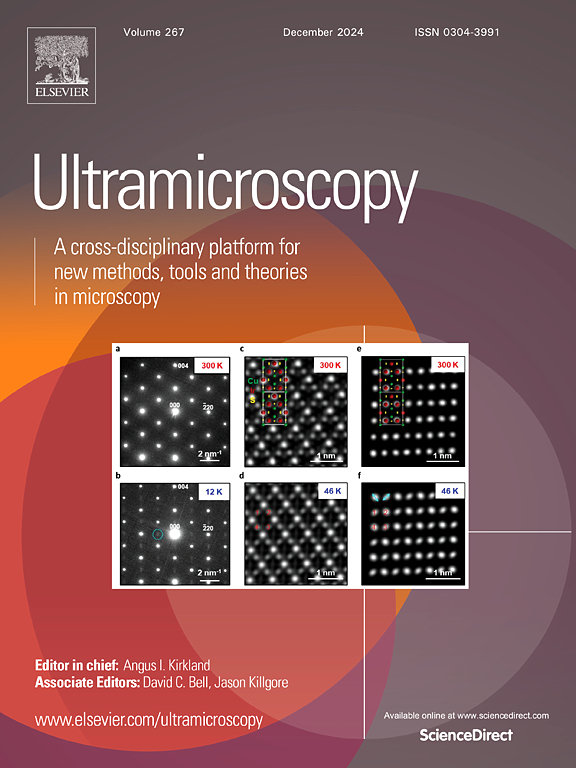Imaging domain boundaries of rubrene thin crystallites by photoemission electron microscopy
IF 2
3区 工程技术
Q2 MICROSCOPY
引用次数: 0
Abstract
The progress of designing organic semiconductors is extensively dependent on the quality of prepared organic molecular assemblies, since the charge transport mechanism is strongly efficient in highly ordered crystals compared to amorphous domains. Here we present a comprehensive photoemission electron microscopy (PEEM) and time-of-flight (TOF) spectroscopic study of rubrene () thin crystals focusing on recently developed orthorhombic crystalline morphologies applied in organic electronic devices. Using femtosecond pulsed lasers with photon energies between 3–6 eV, we explore the interplay between photoemission processes, crystal morphology, and defect states. In a 2-photon photoemission process (2PPE), the PEEM images reveal dominant emission localized at domain boundaries, indicating strong contributions from trap states. In contrast, in 1PPE nm excitation uniform emission across the crystal surface is observed, highlighting a fundamental difference in photoemission mechanisms. Furthermore, in the intermediate photon energy range, we identify a nonlinear, non-integer photon order, where mostly the triclinic morphology contributes to the emission, distinguishing it from the orthorhombic phase. These findings provide a new framework for assessing the quality and internal structure of organic semiconductor thin films via wavelength-dependent photoemission imaging and spectroscopy.
rubrene薄晶的光电发射电子显微镜成像畴边界
有机半导体设计的进展很大程度上取决于所制备的有机分子组件的质量,因为与非晶畴相比,高有序晶体中的电荷传输机制非常有效。在这里,我们提出了一个全面的光电发射电子显微镜(PEEM)和飞行时间(TOF)光谱研究rubrene (C48H24)薄晶体的重点是最近发展的正交晶体形态应用于有机电子器件。利用光子能量在3-6 eV之间的飞秒脉冲激光器,我们探索了光电过程、晶体形态和缺陷态之间的相互作用。在双光子发光过程(2PPE)中,PEEM图像显示主要的发射定位于域边界,表明陷阱态的贡献很大。相比之下,在1PPE nm激发下,观察到晶体表面均匀发射,突出了光电发射机制的根本差异。此外,在中间光子能量范围内,我们确定了非线性,非整数光子阶,其中主要是三斜形态有助于发射,将其与正交相区分开来。这些发现为利用波长相关光发射成像和光谱学来评估有机半导体薄膜的质量和内部结构提供了一个新的框架。
本文章由计算机程序翻译,如有差异,请以英文原文为准。
求助全文
约1分钟内获得全文
求助全文
来源期刊

Ultramicroscopy
工程技术-显微镜技术
CiteScore
4.60
自引率
13.60%
发文量
117
审稿时长
5.3 months
期刊介绍:
Ultramicroscopy is an established journal that provides a forum for the publication of original research papers, invited reviews and rapid communications. The scope of Ultramicroscopy is to describe advances in instrumentation, methods and theory related to all modes of microscopical imaging, diffraction and spectroscopy in the life and physical sciences.
 求助内容:
求助内容: 应助结果提醒方式:
应助结果提醒方式:


